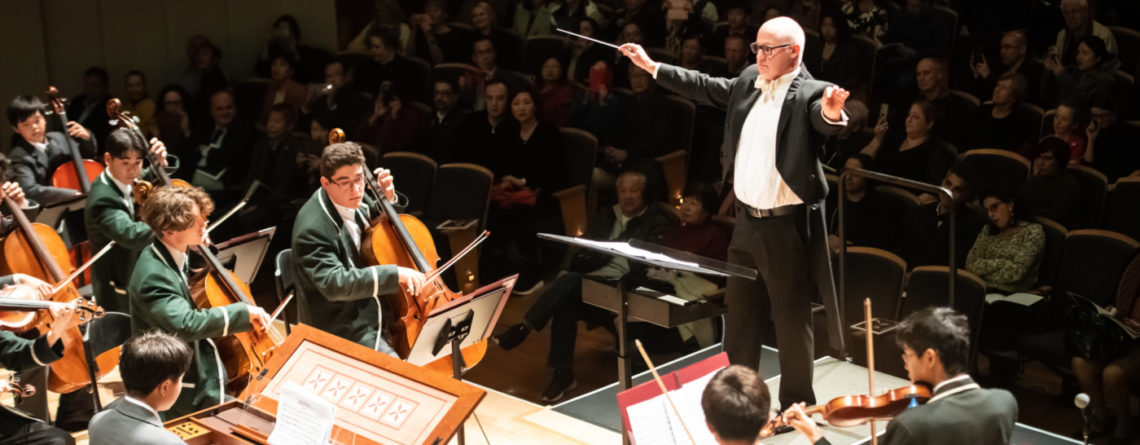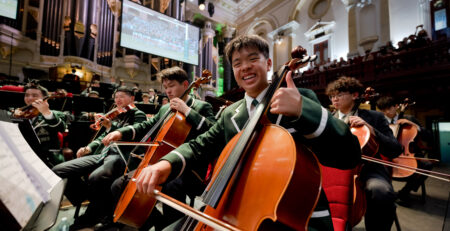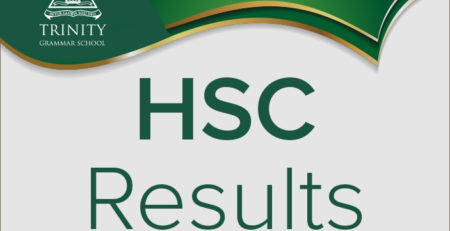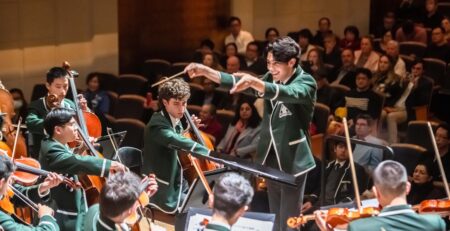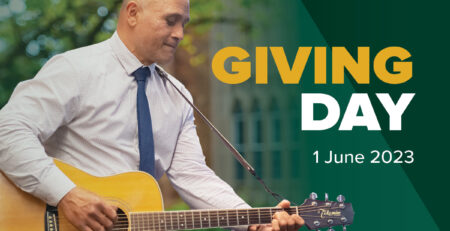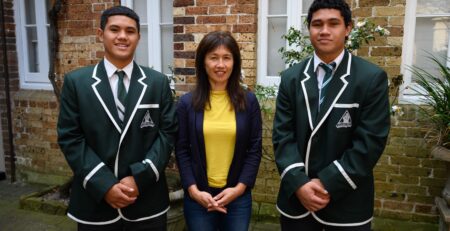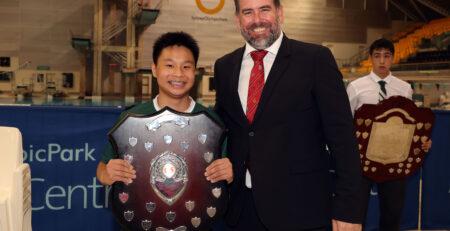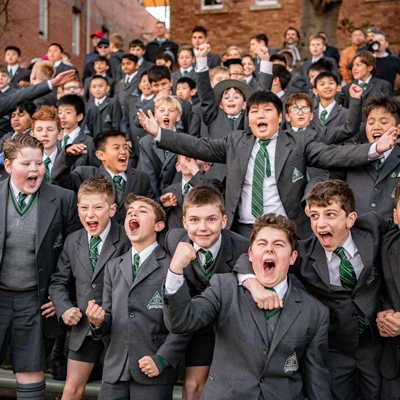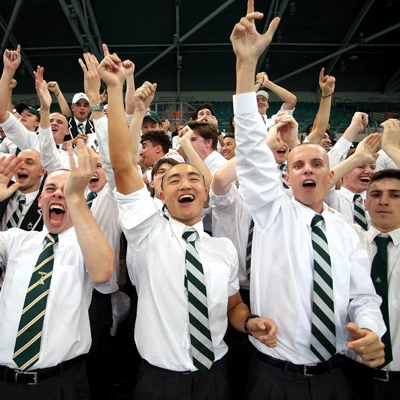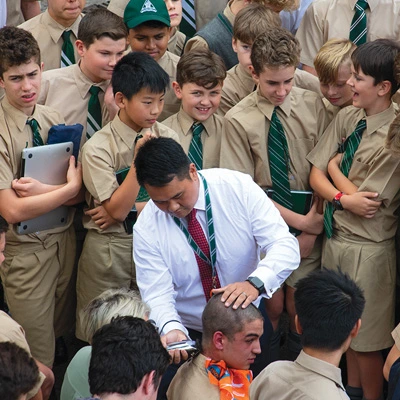The Making Of A Symphony
A behind-the-scenes look at Trinity’s premier musical event
“It’s weeks until you perform this before thousands of people – no pressure!”
Dr Michael McGregor’s words ring in the ears of some 60 members of Trinity’s Symphony Orchestra on an autumn Friday afternoon.
The sun is shining outside the School’s Orchestra room; most of their classmates have gone home to start their weekends.
Inside, they are at their regular weekly rehearsal, polishing the Sibelius masterpiece Finlandia for the 2021 gala concert, Trinity’s flagship ensemble evening.
Holding the baton is the School’s Director of Co-Curricular Music; he is happy with progress overall, but it’s an exacting work and some segments need fine-tuning.
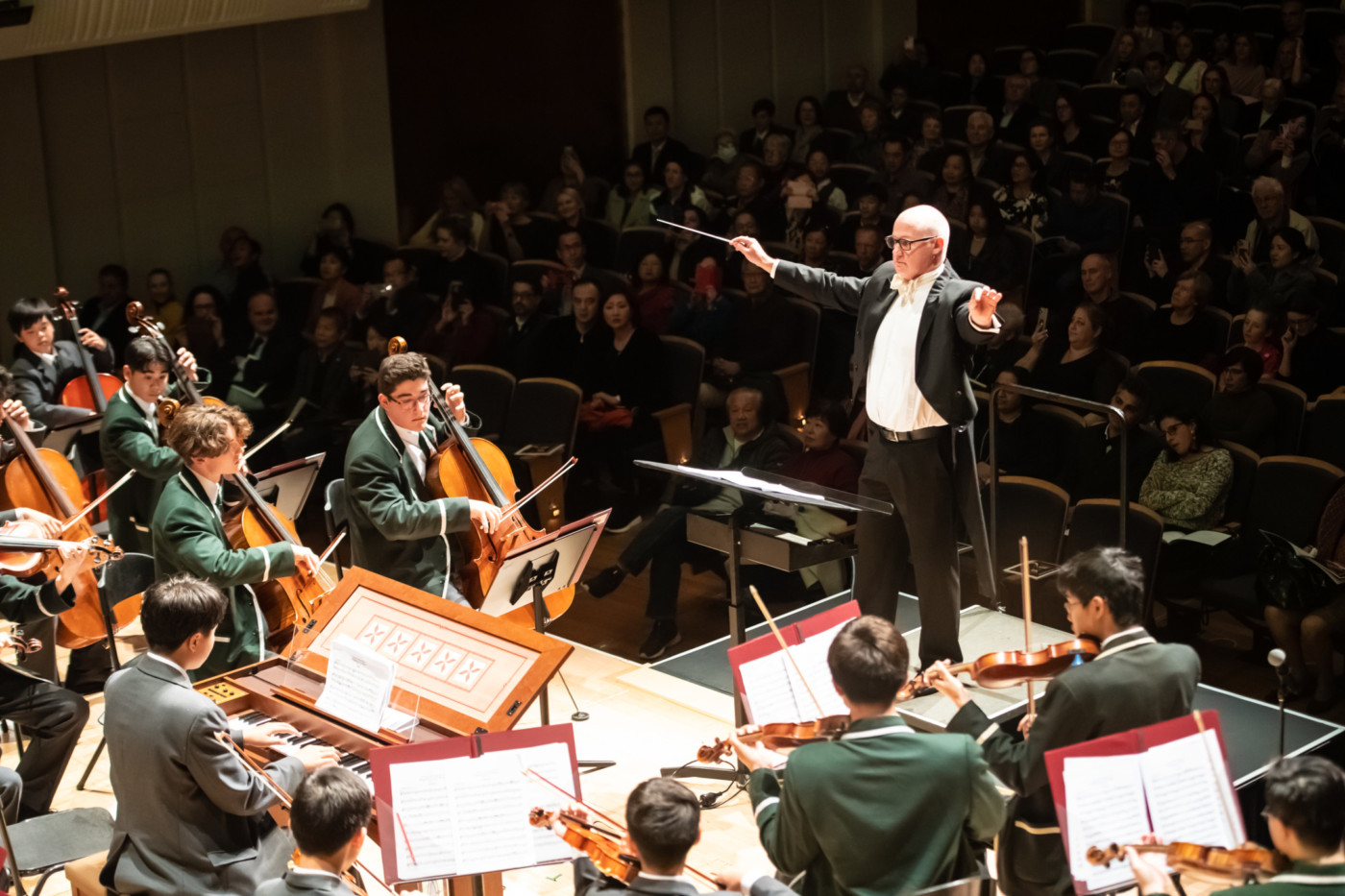
Dr McGregor’s task resembles that of a circus tightrope walker; he strikes a balance between striving for excellence and maintaining an atmosphere of fun and good humour as he encourages, cajoles, corrects and implores his charges to do better.
At one point he stops to tell the bassoons: “You need to sound a bit more evil – just be yourself!”
Soon there is a rousing finale that inspires wonder at how such a rich sound can be made by five dozen boys in unison.
“Did you enjoy that?” the conductor asks.
The scene switches to early the following Wednesday, and Dr McGregor is on deck again as the Trinity choir tackles a particularly challenging section of Bach’s Magnificat.
It involves no fewer than 12 movements and five different vocal parts; it has to be spot-on because it will play a key part in the gala concert.
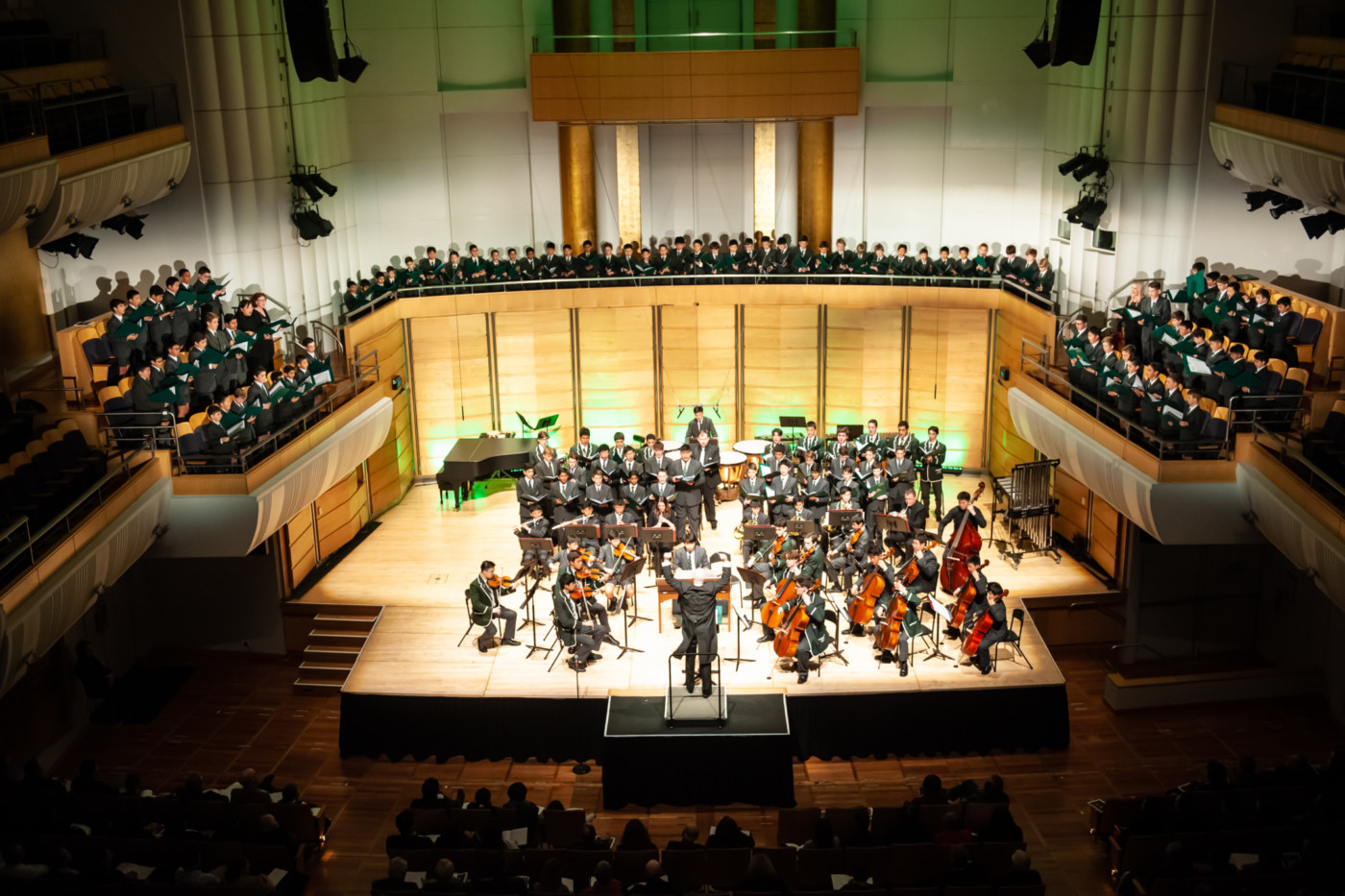
Dr McGregor’s smiling assessment at this stage is: “Close but no cigar.”
He encourages the several dozen choristers to redouble their efforts, telling the tenors he “wasn’t convinced” by their “Glorias” in the middle section and that they seem “deeply afraid” of bar 14.
It’s not long after daybreak in the choir room of Trinity’s Roderick West Music Centre, and there are a couple of early morning yawns as the choir goes through its paces.
Acting academic head of the high school music faculty Carlie Purkis and accompanist Greg Kinda have already taken the singers through their warm-ups and introduced them to a new section of the Magnificat.
“No waffling across – you have to be precise,” Ms Purkis tells the altos, advising them to close their eyes to better hear their sound and phrasing.
These behind-the-scenes glimpses are just another morning in the life of the School, but the choristers, like hundreds of other Trinity musicians, are working relentlessly towards the June 2 concert at Sydney’s Angel Place recital hall.
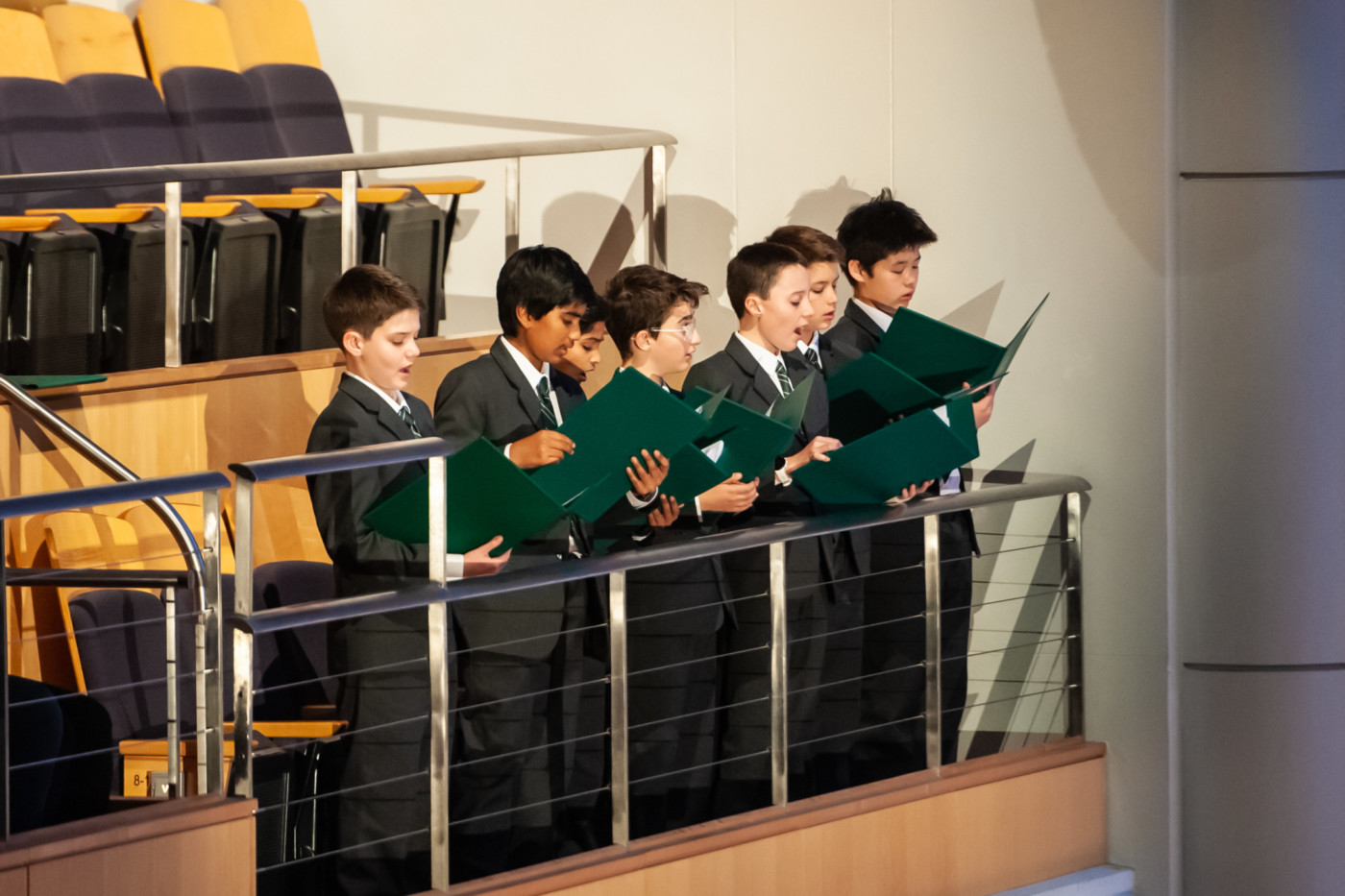
Music forms a central part of Trinity’s life, involving more than 700 of the 2,200 student body. But it is not performed just for its own sake; there is a purpose to every bar, whether it be for the gala concert, exams, musicals, chapel services, studio recitals, assembly performances, concerto competitions, soloist competitions, choral festivals or the annual Battle of the Bands.
At the Strathfield Preparatory School, around 250 boys take private lessons from 19 teachers, learning violin, viola, cello, flute, oboe, clarinet, saxophone, trumpet, trombone, percussion, piano and guitar.
At Summer Hill some 30 teachers provide individual tuition to 586 students learning virtually any instrument they can imagine.
Pre-COVID, almost two in three Junior School students were either learning an instrument, in an ensemble, or both.
The gala concert is the centrepiece of the School’s musical collaboration; although a few solo spots are woven into its framework it is essentially a celebration of “making music together”, featuring the Trinity Symphony Orchestra, choir, concert band, big band, sinfonietta and other ensembles.
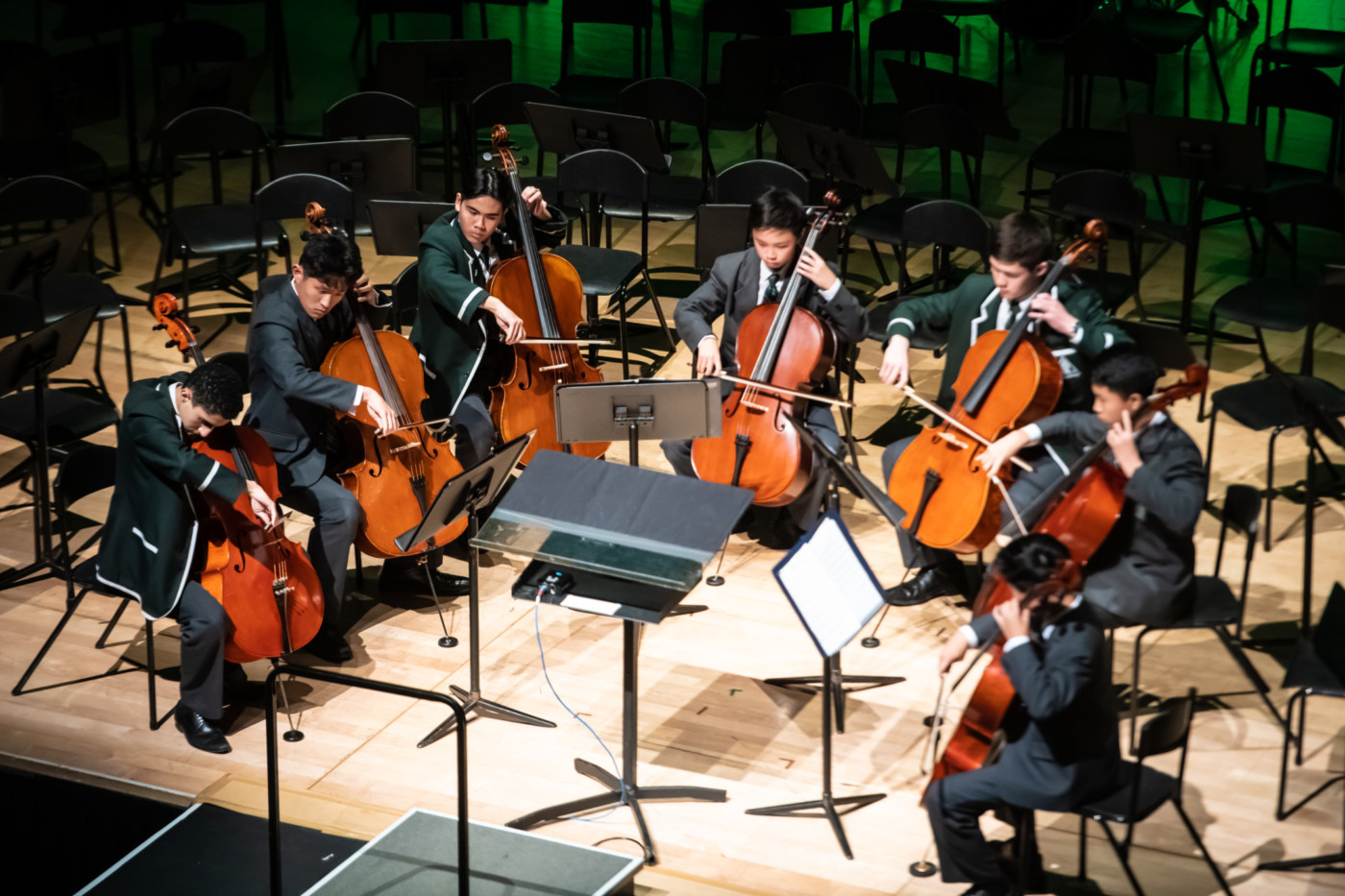
“The social aspect of music making is very important,” said Dr McGregor.
“Just as in sport, the musicians are part of a team, and when they fulfil their role it makes the whole team stronger.”
Junior School Director of Music Trevor Adams said: “At Trinity we emphasise learning with others. We find it enhances a child’s musical and social development, as well as their problem solving skills.
“It’s like sport in that it involves significant motor control. When a child does that in a group the cognitive expectations are more pronounced because they have to do it at a particular time. In a group there’s an urgency to do it at the same time as everyone else.”
Preparatory School Director of Music Geraldine Campbell, who played violin with the Queensland Youth Orchestra, said: “Playing together and getting it right gives you a buzz you remember for the rest of your life.
“Joining an ensemble gives you a sense of purpose and a sense of being in a unit. You don’t want to let the others down.”
She said the strength of the Prep School’s music program was a “major point of difference” with other schools.
“Parents see what we are offering and say, ‘Wow!’
“It’s intrinsic to what we do.”
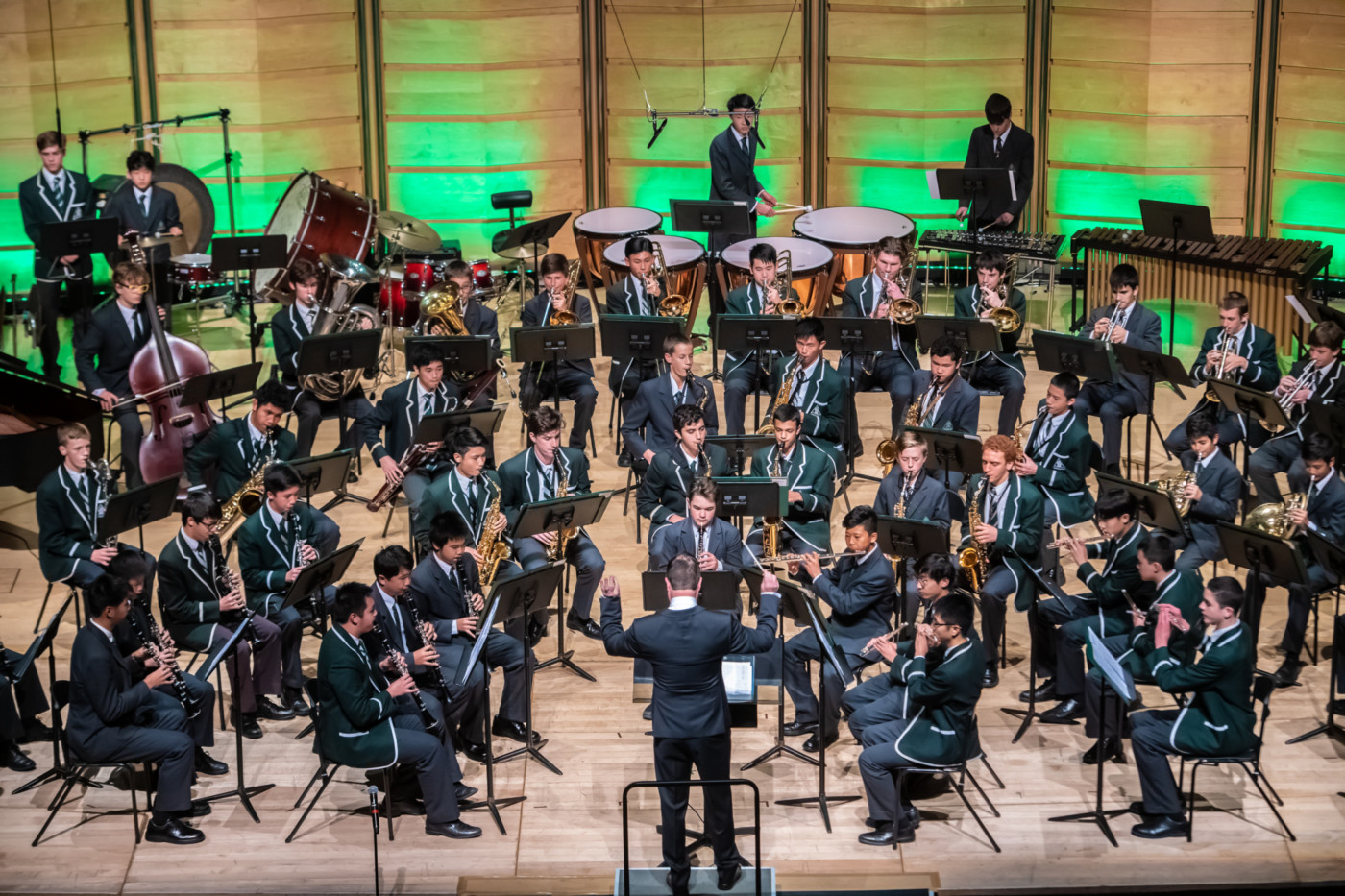
She said the Prep School’s catchment area included many multi-cultural Asian families who appreciated the value of learning an instrument.
“That helps us. You need that parental support; you can’t do it on your own.”
Trevor Adams said ensembles also helped to solve the hoary old problem of how to get students to practice.
“Some parents say, ‘I’m not a tiger parent, I don’t want to be telling them to practise all the time’. That’s exactly why you should have them in an ensemble. It takes the pressure off.
“It’s not about being in a room by yourself; it’s about making a contribution in a group.
“The other great thing about ensembles is that you can hide.”
He laughs as he explains: “I have some kids with anxiety who think they’re going to be on show. They care – that’s why they’re experiencing anxiety. But I tell them, ‘If you make a mistake, look at the person next to you and frown’. The source of the mistake can’t be identified. An ensemble is safe. I can’t think of a time when that message hasn’t worked eventually.”
All 540 students at Strathfield, and the 300 Junior School students at Summer Hill, have compulsory string lessons in Year 1 and 2.
All Year 4 students have compulsory band program.
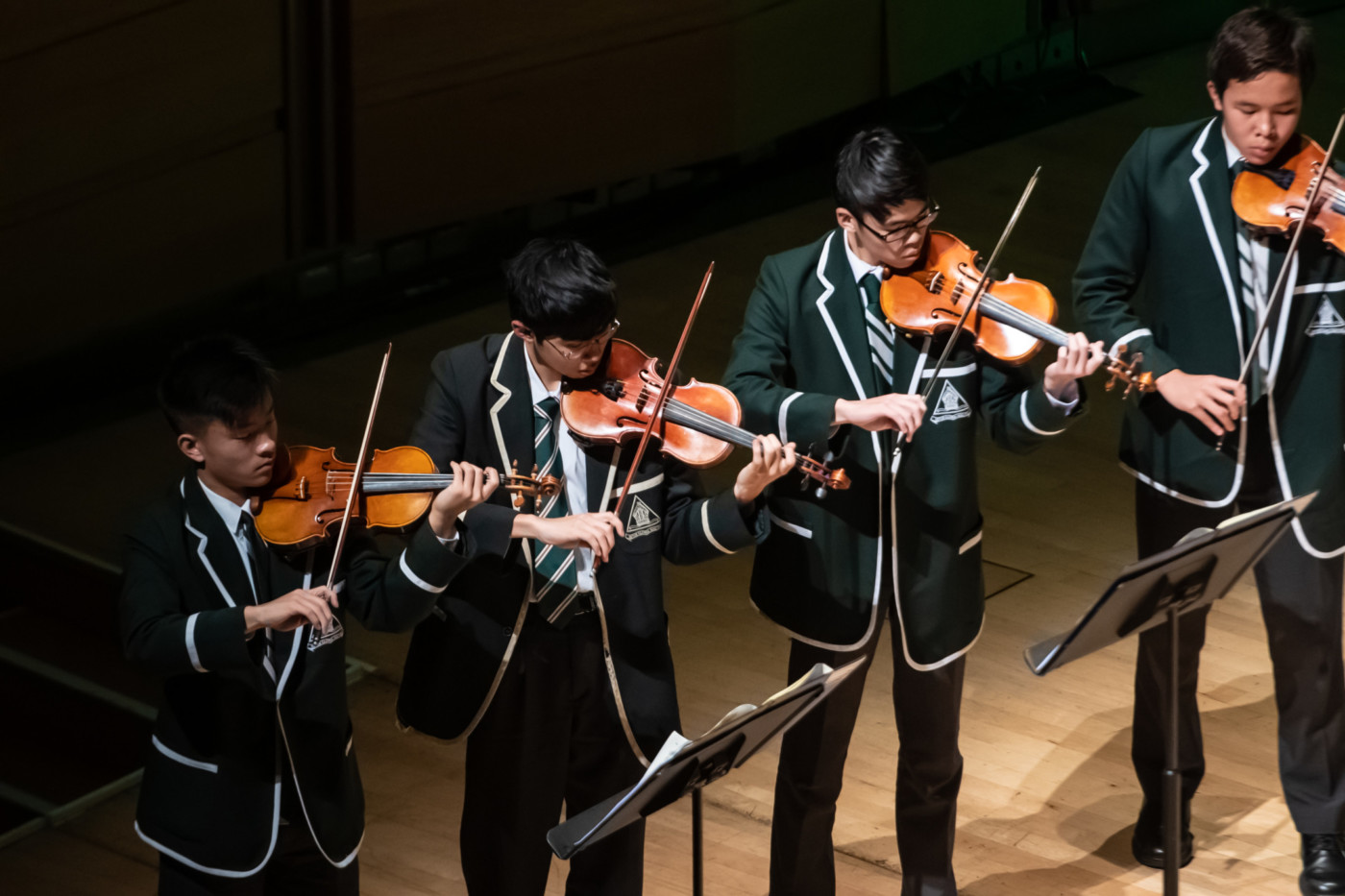
Outstanding primary students can join an advancement program that enables them to join the full symphony orchestra.
One year 3 student, for example, is already studying grade 7 violin, and a Year 6 student is tackling grade 8 viola.
Year 4, 5 and 6 boys, usually about 50 of them, sing in the mass choir.
Trevor Adams summed up the importance of music: “If a parent came to me asking for one bit of advice – overall advice – for their son, I would say: teach them music.”
Michael McGregor described music as the “golden threads” in the fabric of life.

